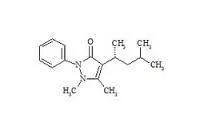- Afrikaans
- Albanian
- Amharic
- Arabic
- Armenian
- Azerbaijani
- Basque
- Belarusian
- Bengali
- Bosnian
- Bulgarian
- Catalan
- Cebuano
- Corsican
- Croatian
- Czech
- Danish
- Dutch
- English
- Esperanto
- Estonian
- Finnish
- French
- Frisian
- Galician
- Georgian
- German
- Greek
- Gujarati
- Haitian Creole
- hausa
- hawaiian
- Hebrew
- Hindi
- Miao
- Hungarian
- Icelandic
- igbo
- Indonesian
- irish
- Italian
- Japanese
- Javanese
- Kannada
- kazakh
- Khmer
- Rwandese
- Korean
- Kurdish
- Kyrgyz
- Lao
- Latin
- Latvian
- Lithuanian
- Luxembourgish
- Macedonian
- Malgashi
- Malay
- Malayalam
- Maltese
- Maori
- Marathi
- Mongolian
- Myanmar
- Nepali
- Norwegian
- Norwegian
- Occitan
- Pashto
- Persian
- Polish
- Portuguese
- Punjabi
- Romanian
- Russian
- Samoan
- Scottish Gaelic
- Serbian
- Sesotho
- Shona
- Sindhi
- Sinhala
- Slovak
- Slovenian
- Somali
- Spanish
- Sundanese
- Swahili
- Swedish
- Tagalog
- Tajik
- Tamil
- Tatar
- Telugu
- Thai
- Turkish
- Turkmen
- Ukrainian
- Urdu
- Uighur
- Uzbek
- Vietnamese
- Welsh
- Bantu
- Yiddish
- Yoruba
- Zulu
ធ្នូ . 05, 2024 22:33 Back to list
Optimizing 2.5% Glutaraldehyde Fixation for Enhanced Electron Microscopy Imaging Techniques
The Use of 2.5% Glutaraldehyde Fixation for Electron Microscopy
Introduction
Electron microscopy (EM) is a powerful imaging technique that allows for the visualization of cellular structures at extremely high resolutions. The preparation of biological specimens for EM requires meticulous fixation processes to preserve cellular architecture and prevent artefactual changes that can occur during sample preparation. One of the most widely used fixatives in electron microscopy is 2.5% glutaraldehyde. This article discusses the importance of glutaraldehyde fixation, its procedures, applications, and considerations in the context of electron microscopy.
What is Glutaraldehyde?
Glutaraldehyde is a bifunctional aldehyde that acts as a cross-linking agent. At the molecular level, it reacts with amino acids, proteins, and nucleic acids, leading to the stabilization of cellular structures. The 2.5% concentration is most commonly used because it effectively preserves the morphology of cells while providing enough penetration and fixation speed to maintain the integrity of subcellular organelles.
The Fixation Process
Fixation with 2.5% glutaraldehyde typically involves several steps
1. Preparation of the Fixative The fixative solution is prepared by diluting a stock solution of glutaraldehyde with a buffer, often phosphate-buffered saline (PBS) or cacodylate buffer. The pH of the buffer is crucial, as it can influence the effectiveness of fixation and the preservation of certain cellular structures.
2. Tissue Collection Biological samples, whether tissues or isolated cells, should be ideally collected immediately after excision to prevent autolysis. They are cut into small pieces (usually less than 1 mm thick) to ensure adequate penetration of the fixative.
3. Fixation The tissue samples are immersed in the 2.5% glutaraldehyde solution. Fixation times can vary based on the type of tissue but generally range from 1 to several hours at 4°C. The low temperature helps to slow down the fixation process, allowing for deeper penetration without excessive shrinkage or distortion of cellular structures.
4. Post-fixation Washing After fixation, specimens are thoroughly washed in a suitable buffer to remove unreacted fixative. This step is critical to prevent background staining in subsequent steps of sample processing.
5. Dehydration and Embedding Following washing, samples are subjected to a series of ethanol or acetone dilutions for dehydration before embedding in resin, allowing for ultra-thin sectioning required for electron microscopy.
2.5 glutaraldehyde fixation for electron microscopy

Applications of Glutaraldehyde Fixation
The use of 2.5% glutaraldehyde is crucial for various fields of research in biology and medicine. This method is particularly valuable in
1. Cell Biology It allows researchers to investigate cell morphology, organelle structure, and cell surface features in various experimental conditions.
2. Neuroscience Glutaraldehyde fixation is extensively utilized for studying synaptic structures and neural networks, where preservation of fine details is key to understanding connectivity and function.
3. Microbiology The fixation of microbial cells is essential for studying surface structures, flagella, pili, and biofilm formations, providing insights into microbial behavior and pathogenicity.
Considerations for Using Glutaraldehyde
While 2.5% glutaraldehyde has many advantages, certain considerations must be addressed
- Toxicity Glutaraldehyde is toxic; hence, safety protocols must be strictly followed, including the use of fume hoods, gloves, and protective clothing.
- Background Staining Unreacted glutaraldehyde can lead to background staining in the EM samples. Thorough washing is essential to mitigate this issue.
- Temperature Sensitivity The fixation process is temperature-sensitive. Higher temperatures may lead to rapid fixation but could induce artefacts or distortions in the sample.
Conclusion
The utilization of 2.5% glutaraldehyde for fixation in electron microscopy plays a pivotal role in the study of ultrastructure across various biological fields. Its ability to preserve cellular architecture, combined with effective cross-linking properties, makes it an invaluable tool for researchers aiming to gain insights into the complex structural dynamics of cells. As electron microscopy continues to evolve, the refinement of fixation protocols and a deeper understanding of the biochemical interactions involved will enhance the resolution and accuracy of cellular imaging.
-
Guide to Oxytetracycline Injection
NewsMar.27,2025
-
Guide to Colistin Sulphate
NewsMar.27,2025
-
Gentamicin Sulfate: Uses, Price, And Key Information
NewsMar.27,2025
-
Enrofloxacin Injection: Uses, Price, And Supplier Information
NewsMar.27,2025
-
Dexamethasone Sodium Phosphate Injection: Uses, Price, And Key Information
NewsMar.27,2025
-
Albendazole Tablet: Uses, Dosage, Cost, And Key Information
NewsMar.27,2025













